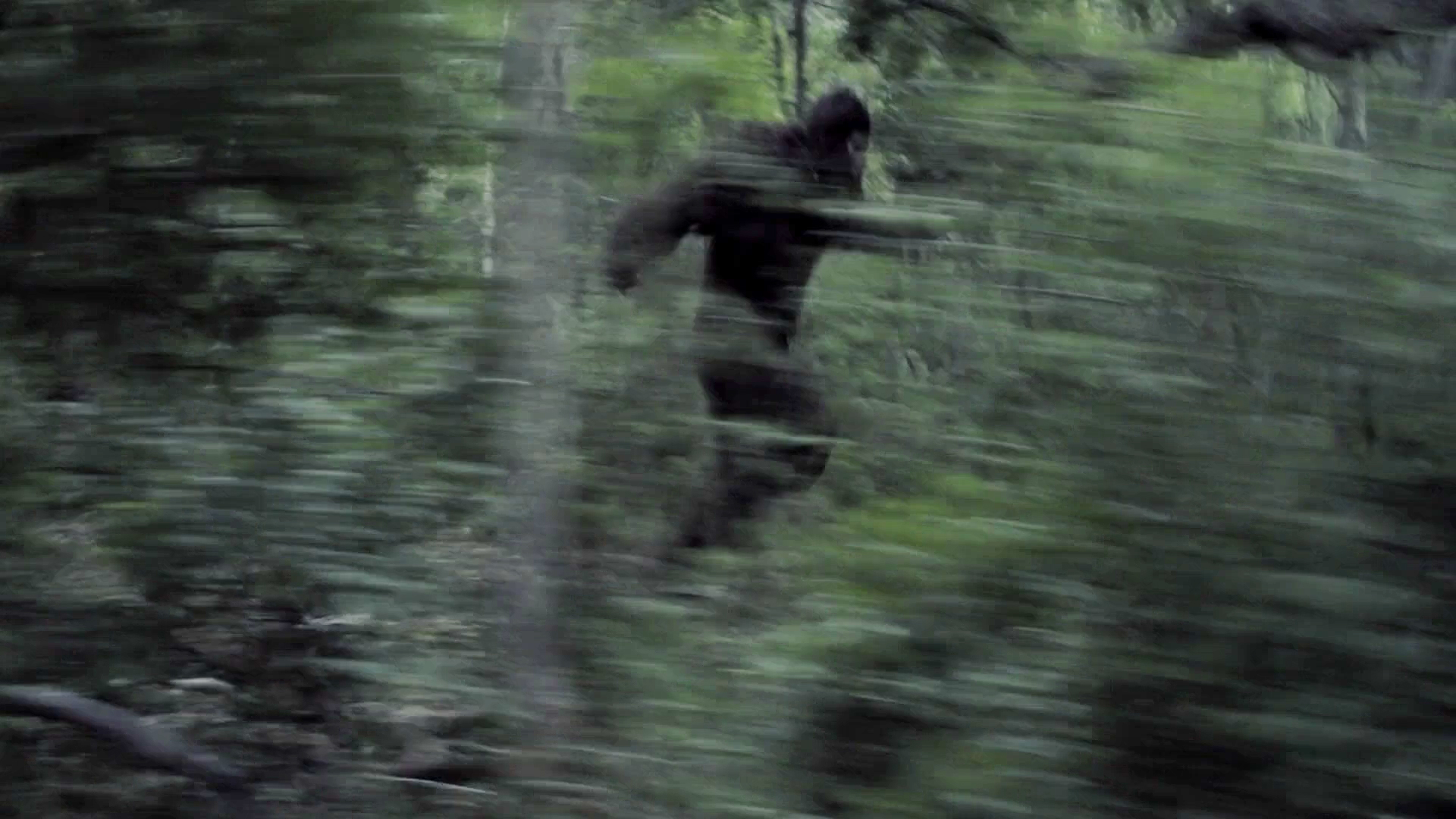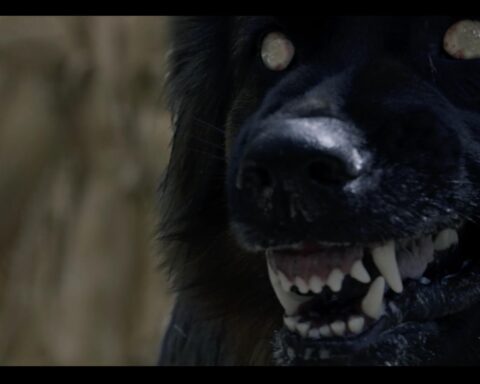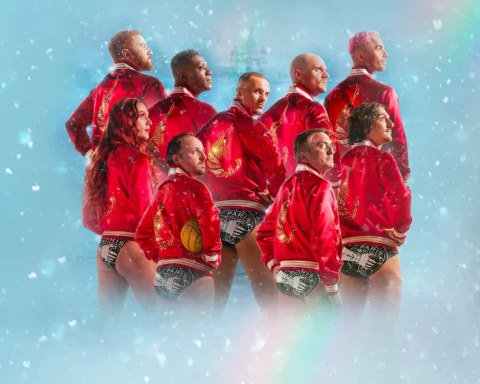Bigfoot, also known as Sasquatch, has been a part of North American folklore for centuries. The elusive and mysterious creature, described as a large, hairy, ape-like being, has captured the imaginations of people around the world. As a result, it has become a popular subject in cinema, with numerous films exploring the legend of Bigfoot in various ways. From horror to comedy, the myth of Bigfoot has been brought to life on the big screen in countless ways. In this article, we will delve into the five absolute best Bigfoot movies, discussing why each stands out in the genre, and we’ll include a bonus sixth film that you absolutely shouldn’t miss: Exists.
1. The Legend of Boggy Creek (1972)
Director: Charles B. Pierce
Genre: Docudrama/Horror
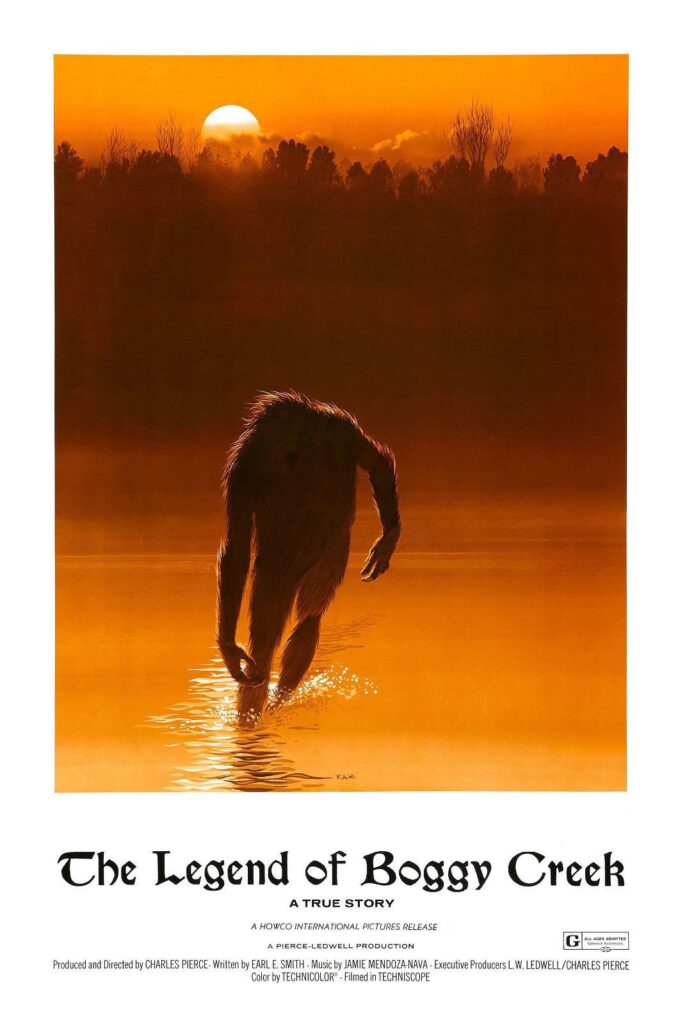
Why It’s a Classic:
“The Legend of Boggy Creek” is often credited with igniting the cinematic fascination with Bigfoot. Directed by Charles B. Pierce, this film is a seminal work that blends documentary and horror, creating a unique style that would go on to influence many other films in the genre. Set in the small town of Fouke, Arkansas, the film explores the real-life legend of the Fouke Monster, a Bigfoot-like creature said to inhabit the swamps around the town.
What makes “The Legend of Boggy Creek” so compelling is its raw, almost primitive style of filmmaking. The movie was made on a shoestring budget, but Pierce turned this limitation into a strength. The grainy footage, amateur actors, and real-life interviews with locals add a layer of authenticity that is hard to replicate. The film blurs the line between fact and fiction, leaving audiences unsure of what is real and what is dramatized, a technique that has since become a staple in found-footage horror films.
The eerie, atmospheric cinematography captures the misty swamps and dense woods of Arkansas, creating a setting that is as much a character in the film as the creature itself. The minimalist score, composed of haunting folk tunes, further immerses the viewer in the Southern Gothic ambiance.
While it may not be as polished as modern horror films, “The Legend of Boggy Creek” remains a milestone in Bigfoot cinema. Its influence is undeniable, paving the way for a wave of creature features that would dominate drive-ins and theaters throughout the 1970s and beyond.
Cultural Impact:
The film’s success at the box office (grossing over $20 million on a budget of around $100,000) demonstrated the public’s appetite for Bigfoot stories. It inspired a slew of similar films, contributing to the proliferation of Bigfoot myths in American popular culture. Its docudrama style, combining interviews with dramatized re-enactments, also influenced later horror films, especially in the found-footage subgenre.
2. Willow Creek (2013)
Director: Bobcat Goldthwait
Genre: Found Footage/Horror
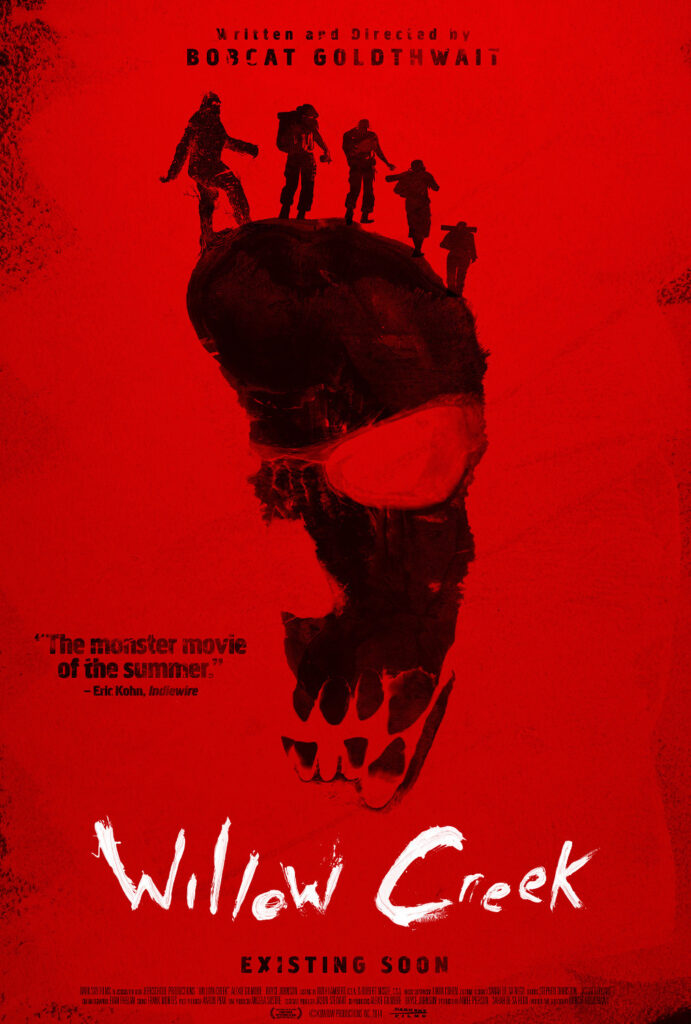
Why It’s a Classic:
“Willow Creek” is a found footage horror film that brings a fresh take to the Bigfoot mythos. Directed by Bobcat Goldthwait, known more for his dark comedies, “Willow Creek” is an exercise in minimalism and tension-building. The film follows a young couple, Jim and Kelly, as they venture into the forests of Northern California in search of the site where the famous Patterson-Gimlin Bigfoot footage was shot.
What sets “Willow Creek” apart from other Bigfoot films is its slow-burn approach to horror. Goldthwait takes his time to develop the characters and the setting, allowing the tension to build gradually. Much of the film’s horror is derived not from what is seen, but from what is heard. The couple’s increasing paranoia as they hear strange noises in the night is far more terrifying than any monster that could be shown on screen.
The film’s climax, a 19-minute unbroken shot inside a tent as the couple listens to unsettling noises outside, is a masterclass in suspense. This scene is a prime example of how less can be more in horror. The viewer’s imagination fills in the gaps, making the unseen threat far scarier than any CGI creature.
“Willow Creek” is also notable for its respect for the Bigfoot legend. The film treats the subject matter seriously, avoiding the campiness that often plagues creature features. Goldthwait’s direction shows a deep understanding of what makes the Bigfoot myth so enduring: the fear of the unknown.
Cultural Impact:
While “Willow Creek” did not achieve mainstream success, it has gained a cult following among horror fans. It is often praised for its effective use of the found footage format, proving that the subgenre still has life in it when executed with care and creativity. The film’s emphasis on atmosphere and psychological horror over jump scares makes it a standout in both the Bigfoot and found footage genres.
3. Harry and the Hendersons (1987)
Director: William Dear
Genre: Family Comedy
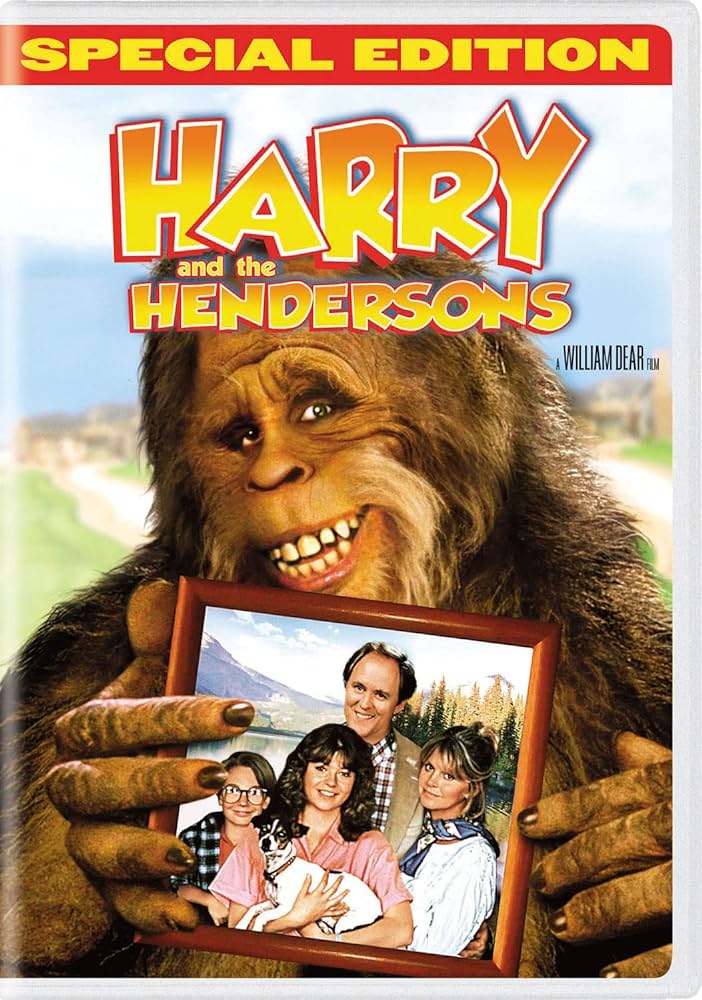
Why It’s a Classic:
“Harry and the Hendersons” is a charming family film that offers a completely different take on the Bigfoot legend. Directed by William Dear, the movie tells the story of the Henderson family, who accidentally hit a Bigfoot with their car while on a camping trip. They bring the creature home, only to discover that “Harry,” as they name him, is not the terrifying monster they expected, but a gentle and intelligent being.
What makes “Harry and the Hendersons” stand out is its heartwarming portrayal of Bigfoot. The film transforms the creature from a figure of fear into one of empathy and humor. Harry is brought to life through an impressive combination of animatronics and makeup, designed by Rick Baker, who won an Academy Award for his work on the film. The character’s expressive face and gentle mannerisms make him a beloved figure, endearing to both children and adults.
The movie also carries a strong environmental message, advocating for the protection of wildlife and the preservation of nature. Harry becomes a symbol of the wilderness, representing the idea that what we fear is often simply misunderstood. The film’s themes of acceptance and understanding resonate with audiences, making it more than just a typical family comedy.
“Harry and the Hendersons” is a film that balances humor and heart with skill. Its success led to a TV series of the same name, further cementing its place in pop culture. While it may not be a horror film like many other Bigfoot movies, it is perhaps the most widely loved portrayal of the creature.
Cultural Impact:
“Harry and the Hendersons” played a significant role in shaping the public perception of Bigfoot. By portraying the creature as a lovable and misunderstood figure, the film softened the image of Bigfoot in popular culture. It also introduced the legend to a new generation of viewers, ensuring that the myth of Bigfoot would continue to thrive in American culture.
4. Abominable (2006)
Director: Ryan Schifrin
Genre: Horror/Thriller

Why It’s a Classic:
“Abominable” is a horror-thriller that brings the terror of Bigfoot back to the forefront. Directed by Ryan Schifrin, the film is a loving homage to the creature features of the 1950s and ’60s, while also drawing inspiration from Alfred Hitchcock’s “Rear Window.” The plot centers on Preston Rogers, a man confined to a wheelchair after a climbing accident, who begins to suspect that a creature is stalking a group of women in a nearby cabin.
What sets “Abominable” apart from other Bigfoot films is its blend of classic horror elements with modern filmmaking techniques. The movie effectively builds suspense through its confined setting and the vulnerability of its protagonist. The use of practical effects and animatronics to create the Bigfoot creature gives it a tangible presence, adding to the film’s tension.
“Abominable” also excels in its pacing and atmosphere. Schifrin understands the importance of anticipation in horror, and he uses it to great effect. The film’s climax is a thrilling and bloody showdown that pays off the tension built throughout the movie.
While “Abominable” may not have the same level of recognition as some of the other films on this list, it is a hidden gem in the Bigfoot genre. Its commitment to practical effects and suspenseful storytelling makes it a must-watch for fans of creature features and horror thrillers alike.
Cultural Impact:
“Abominable” has gained a cult following since its release, particularly among fans of creature features and practical effects. It is often praised for its homage to classic horror films and its effective use of suspense. The film stands as a testament to the enduring appeal of the Bigfoot legend and the versatility of the creature in horror cinema.
5. The Man Who Killed Hitler and Then The Bigfoot (2018)
Director: Robert D. Krzykowski
Genre: Drama/Fantasy

Why It’s a Classic:
“The Man Who Killed Hitler and Then The Bigfoot” is a film that defies genre conventions. Directed by Robert D. Krzykowski, this movie is part drama, part fantasy, and part historical fiction, with a touch of creature feature thrown in. The film stars Sam Elliott as Calvin Barr, an aging war hero who, as the title suggests, once assassinated Adolf Hitler and is now called upon to hunt down Bigfoot, who is carrying a deadly plague.
What makes this film unique is its tone and approach to storytelling. Rather than focusing solely on the action or the creature, the movie delves into the psyche of its protagonist. Calvin Barr is a man burdened by the weight of his past deeds, and the film explores themes of regret, aging, and the cost of heroism. The Bigfoot hunt, while central to the plot, is almost secondary to the character study at the heart of the film.
Sam Elliott’s performance is a standout, bringing depth and gravitas to the role of Calvin Barr. His portrayal of a weary, world-weary hero adds a layer of emotional complexity that is rare in films of this genre. The film’s cinematography and score also contribute to its melancholic and reflective tone.
“The Man Who Killed Hitler and Then The Bigfoot” is a film that may not be for everyone, given its slow pace and unconventional narrative. However, for those willing to embrace its unique approach, it offers a thoughtful and poignant take on the Bigfoot legend.
Cultural Impact:
The film has been praised for its originality and for Sam Elliott’s performance, with some calling it a future cult classic. It stands out in the Bigfoot genre for its willingness to take risks and explore deeper themes, rather than simply relying on action or horror. While it may not have reached a wide audience, it has earned a dedicated fan base and critical acclaim.
Bonus: Exists (2014)
Director: Eduardo Sánchez
Genre: Found Footage/Horror

Why It’s a Must-Watch:
“Exists” is a found footage horror film directed by Eduardo Sánchez, who is best known for co-directing “The Blair Witch Project,” one of the most influential found footage films of all time. With “Exists,” Sánchez returns to the format he helped popularize, this time focusing on the Bigfoot legend.
The film follows a group of friends who venture into the Texas woods for a weekend getaway, only to find themselves stalked by a relentless and terrifying Bigfoot. What makes “Exists” stand out is its intense pacing and relentless tension. From the moment the group encounters the creature, the film becomes a non-stop thrill ride, with the Bigfoot portrayed as a truly fearsome and violent predator.
Sánchez uses the found footage format to great effect, creating a sense of immediacy and realism that heightens the horror. The shaky camera work and frantic editing mirror the characters’ panic, pulling the audience into the chaos. The creature itself is brought to life with a combination of practical effects and CGI, resulting in one of the most convincing and terrifying Bigfoot depictions in cinema.
“Exists” also benefits from Sánchez’s experience in crafting horror. The film is filled with well-executed jump scares, tense chase sequences, and a palpable sense of dread. It doesn’t waste time on unnecessary exposition or subplots, instead focusing on delivering a pure horror experience.
Cultural Impact:
“Exists” has been well-received by horror fans, particularly those who appreciate the found footage genre. It is often cited as one of the best Bigfoot horror films of recent years, thanks to its effective use of suspense and its terrifying portrayal of the creature. While it may not have the same cultural impact as “The Blair Witch Project,” it stands as a worthy entry in the Bigfoot genre and a testament to Sánchez’s skill as a horror director.
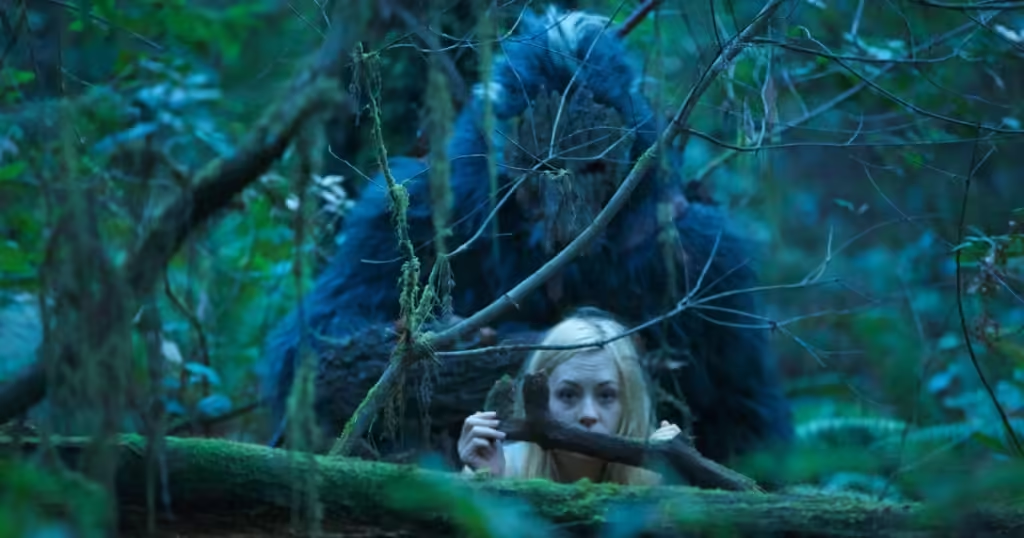
Famous Last Words
The legend of Bigfoot has proven to be a rich source of inspiration for filmmakers, resulting in a diverse array of movies that explore the myth from different angles. From the docudrama horror of “The Legend of Boggy Creek” to the family-friendly comedy of “Harry and the Hendersons,” the creature has been portrayed in ways that reflect the varying cultural attitudes toward the unknown.
The films on this list represent the best of the Bigfoot genre, each offering something unique to the legend. Whether you’re looking for suspense, horror, or heartwarming comedy, there’s a Bigfoot movie for every taste. And if you’re looking for something that combines the terror of “The Blair Witch Project” with the primal fear of an unstoppable predator, “Exists” is the perfect bonus film to round out your viewing experience.
These movies not only entertain but also serve as a testament to the enduring appeal of the Bigfoot legend. As long as there are dark forests and unexplored wildernesses, the myth of Bigfoot will continue to captivate our imaginations, and filmmakers will keep finding new ways to bring this enigmatic creature to life on screen.
